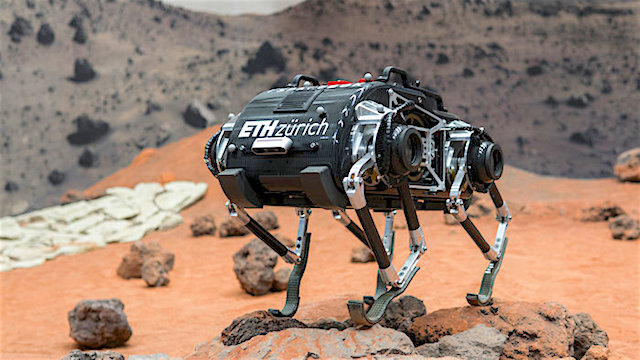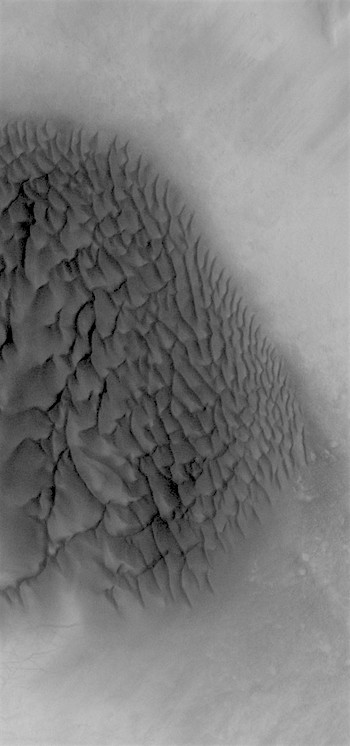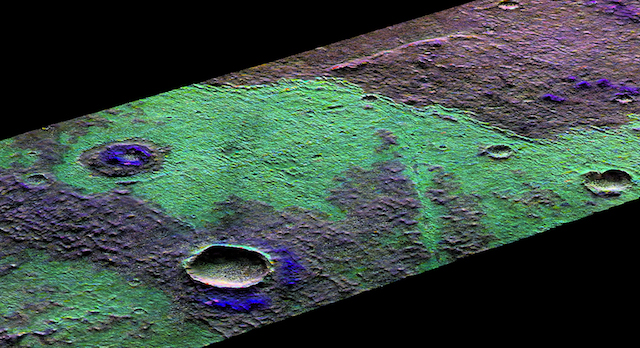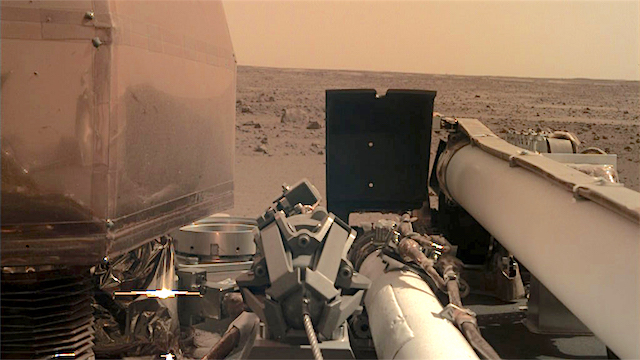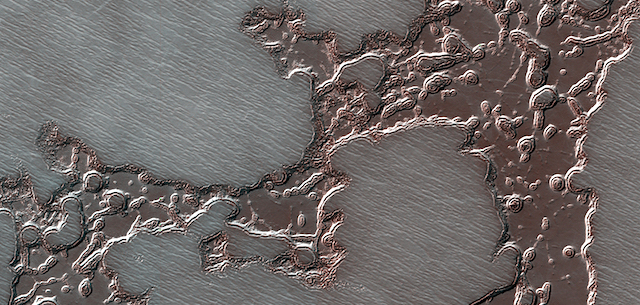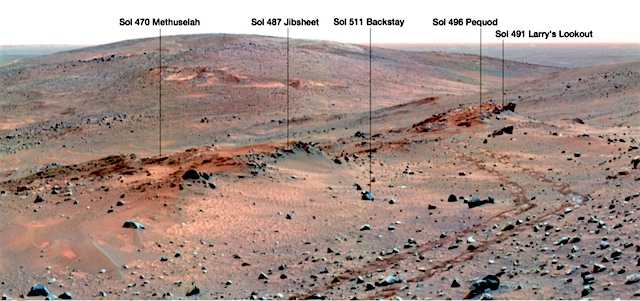 [Editor’s note: From a paper by Ken Herkenhoff and 31 co-authors recently published in the Journal of Geophysical Research.]
[Editor’s note: From a paper by Ken Herkenhoff and 31 co-authors recently published in the Journal of Geophysical Research.]
Overview of Spirit Microscopic Imager Results
The Microscopic Imager (MI) on NASA’s Spirit rover returned the highest‐resolution images of the Martian surface available at the time of the 2004‐2010 mission. Designed to survive 90 Mars days (sols) and search for evidence of water in the past, Spirit returned data for 2210 sols, far exceeding all expectations.
This paper summarizes the scientific insights gleaned from the thousands of MI images acquired during the last five years of the mission, supplementing the summary of the first 450 sols of the Spirit MI investigation published previously (Herkenhoff et al., 2006). Along with data from the other instruments on Spirit, MI images guided the scientific interpretation of the geologic history of the rocks and soils observed in Gusev crater on Mars.
We conclude that the geologic history of the area explored by Spirit has been dominated by impacts and volcanism, and that water, perhaps very hot water, was involved in the evolution of some of the rocks and soils. More recently, winds have moved soil particles and abraded rocks, as observed elsewhere on Mars.
These results have improved our understanding of Mars’ history and informed planning of future missions to Mars. [More at link]










